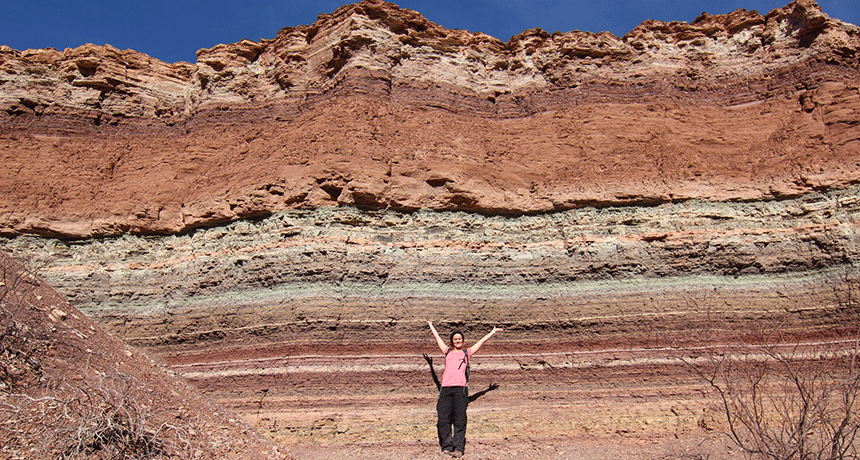Anthropocene Term coined by scientists to describe the age in which humans have been the strongest force of change on the planet. It is generally believed to date from at least the dawn of the Nuclear Age (in the middle 1940s), and possibly even earlier — from the beginning of the Industrial Revolution in the early 1800s.
asteroid A rocky object in orbit around the sun. Most asteroids orbit in a region that falls between the orbits of Mars and Jupiter. Astronomers refer to this region as the asteroid belt.
crust (in geology) Earth’s outermost surface, usually made from dense, solid rock.
dinosaur A term that means terrible lizard. These ancient reptiles lived from about 250 million years ago to roughly 65 million years ago. All descended from egg-laying reptiles known as archosaurs. Their descendants eventually split into two lines. For many decades, they have been distinguished by their hips. The lizard-hipped line are believed to have led to the saurichians, such as two-footed theropods like T. rex and the lumbering four-footed Apatosaurus (once known as brontosaurus). A second line of so-called bird-hipped, or ornithischian dinosaurs, appears to have led to a widely differing group of animals that included the stegosaurs and duckbilled dinosaurs. But a new 2017 analysis now calls into question that characterization of relatedness based on hip shape.
fossil Any preserved remains or traces of ancient life. There are many different types of fossils: The bones and other body parts of dinosaurs are called “body fossils.” Things like footprints are called “trace fossils.” Even specimens of dinosaur poop are fossils. The process of forming fossils is called fossilization.
geologic An adjective that refers to things that are related to Earth’s physical structure and substance, its history and the processes that act on it. People who work in this field are known as geologists.
geological Adjective to describe things related to Earth’s physical structure and substance, its history and the processes that act on it. People who work in this field are known as geologists.
geology The study of Earth’s physical structure and substance, its history and the processes that act on it. People who work in this field are known as geologists. Planetary geology is the science of studying the same things about other planets.
organism Any living thing, from elephants and plants to bacteria and other types of single-celled life.
solid Firm and stable in shape; not liquid or gaseous.
strata (singular: stratum) Layers, usually of rock or earthen materials, whose structure tends to vary little. It is usually different from layers above and was produced at a different period of time using different ingredients.
stratigraphy The study of geological strata — how they were made and what they were made from, their arrangement in the ground and what it tells scientists about the conditions on Earth when these layers were created.








